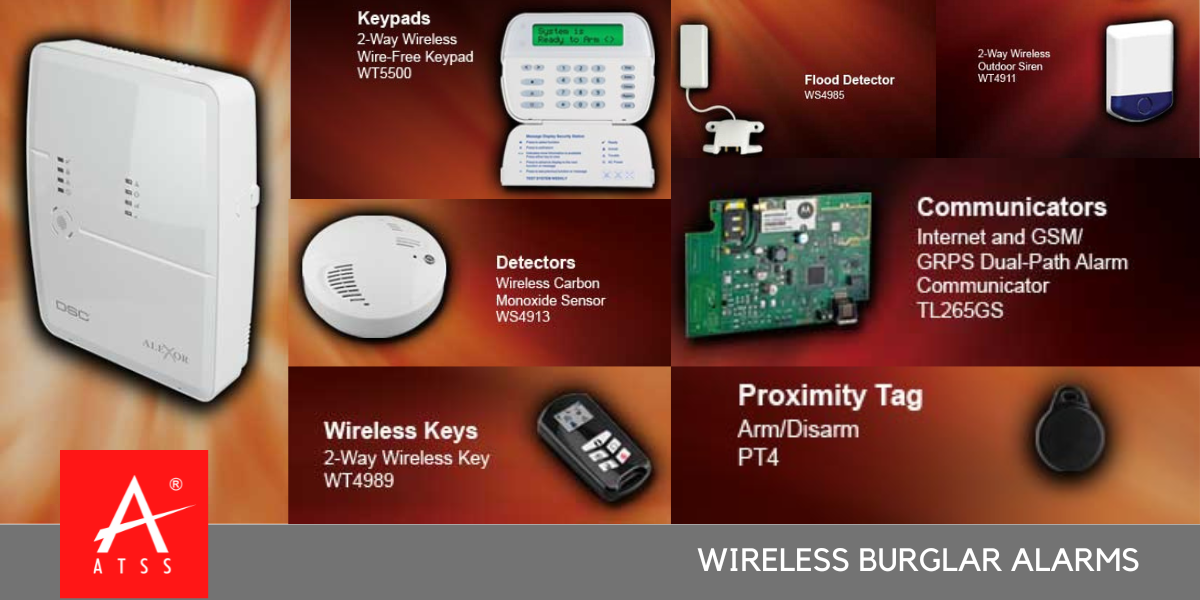
Wireless Burglar Alarms
Protect your home smarter with wireless burglar alarms. Discover how wireless security systems ensure safety, convenience, and real-time control.
Why Wireless Burglar Alarms Are the Future of Home Security
“Is your home truly protected—or just pretending to be?”
In a world where every second counts, relying on outdated wired security systems might be putting your home at unnecessary risk. Wireless burglar alarms are revolutionizing home protection with smarter, faster, and more flexible solutions—without drilling holes or running cables through your walls.
In this blog, we’ll explore how wireless burglar alarms work, their key benefits, top use cases, and why they’re quickly becoming the go-to solution for modern homeowners and small business owners alike.
Central message: Wireless burglar alarms offer unmatched ease of installation, real-time monitoring, and future-proof security—making them a must-have in today’s smart home ecosystem.
What Is a Wireless Burglar Alarm System?
Wireless burglar alarms are advanced security systems that use radio signals (Wi-Fi, cellular, or RF) to detect unauthorized entry and communicate alerts to a control panel or your smartphone. Unlike traditional wired systems, they require no hardwiring, making them ideal for rentals, smart homes, and easy DIY setups.
Key Components of a Wireless Alarm System
- Motion Sensors: Detect movement inside or outside your home.
- Door/Window Contacts: Alert when points of entry are opened.
- Control Panel or Hub: The central brain of the system.
- Mobile App Integration: Receive real-time alerts anywhere.
- Siren or Strobe Lights: Deter intruders instantly.
- Optional Add-ons: Cameras, smoke detectors, panic buttons, and smart door locks.
Benefits of Wireless Burglar Alarms
1. Easy Installation Without Drilling or Cabling
Say goodbye to disruptive installations. Most wireless systems can be set up in under an hour with peel-and-stick sensors. No electrician required.
2. Real-Time Notifications to Your Phone
Wireless burglar alarms connect to your smartphone, enabling instant alerts, arming/disarming remotely, and even live video feeds if integrated with smart cameras.
3. Scalable and Customizable
Need to add a sensor later for your garage? No problem. Wireless systems are modular and grow with your needs—unlike fixed wired systems.
4. Battery-Operated for Power Outages
Most wireless alarm sensors run on batteries with long life (up to 2 years) and notify you before they run low. No reliance on a single power source means your security stays active during blackouts.
5. Aesthetically Clean and Non-Intrusive
Wired systems often clutter your interior design. Wireless sensors are compact, sleek, and can be mounted discreetly.
How Wireless Burglar Alarms Work
When a sensor is triggered—say a door opens or motion is detected—the device sends a wireless signal to the central hub. The hub then activates the alarm and immediately sends notifications via a mobile app, SMS, or even to a monitoring service depending on your setup.
✅ Pro Tip: Many modern wireless systems come with dual connectivity (Wi-Fi + cellular backup) for maximum reliability.
Top Use Cases for Wireless Burglar Alarms
Smart Homes
Integrate with Alexa, Google Assistant, or Apple HomeKit to automate scenes like “Goodnight mode” that arms the system, turns off lights, and locks your doors.
Rental Properties
No permanent modifications? No problem. Wireless alarms are landlord-friendly and easily removable when you move.
Shops and Small Offices
Protect assets outside business hours and manage alarms remotely—even get camera snapshots if linked.
Senior Safety
Install panic buttons and motion sensors in senior homes to alert caregivers instantly in case of emergencies.
Challenges and How to Overcome Them
| Challenge | Solution |
|---|---|
| Wi-Fi signal interference | Use mesh Wi-Fi or devices with RF/cellular backup |
| Battery replacement hassle | Choose models with long-life batteries and alerts |
| Signal hacking or jamming | Invest in systems with encrypted signals and anti-jamming tech |
| False alarms | Calibrate sensitivity levels and use pet-immune sensors |
Choosing the Right Wireless Burglar Alarm System
Here’s a quick checklist to help you choose the right solution:
✅ Mobile App Integration
✅ Backup Power/Battery Alerts
✅ Tamper-Proof Hardware
✅ Optional Professional Monitoring
✅ Expandability (more sensors, smart devices)
Are Wireless Alarms Better Than Wired Systems?
In Short: Yes—for Most Users.
Wired systems have their place in large installations or commercial setups with dedicated infrastructure. But for homeowners and SMEs, the flexibility, ease of use, and smart features of wireless burglar alarms are unbeatable.
Here’s a simple comparison:
| Feature | Wired Systems | Wireless Systems |
|---|---|---|
| Installation | Complex, permanent | Easy, non-invasive |
| Remote Access | Limited or add-on | Built-in mobile access |
| Expandability | Moderate | High |
| Power Dependency | AC Power | Battery + backup options |
| Cost | Higher (labor & wiring) | Lower (DIY-friendly) |
Conclusion
In today’s digital age, security must be smart, simple, and scalable. Wireless burglar alarms deliver just that—along with peace of mind. They empower you to protect your loved ones and assets in real-time, without the stress of complex wiring or manual controls.
🔐 Central message recap: Wireless burglar alarms combine technology, flexibility, and reliability—making them the best choice for modern security.
Ready to upgrade your home security?
👉 Drop a comment if you have questions, share this post with someone who needs it, or contact us for a free security assessment.
Security Systems | Automation For Home | Wireless Cameras | ATSS Alarm | WhatsApp

